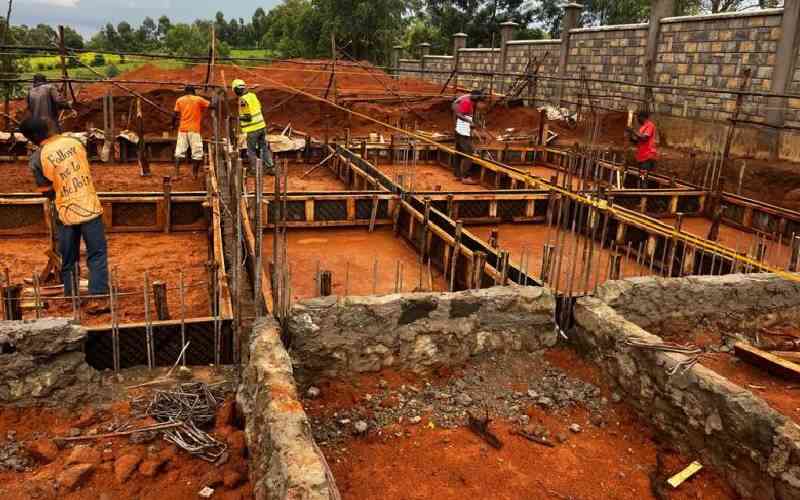The sight of stalled construction projects has become a common symptom of our construction industry. A drive across the City of Nairobi points to a surge on the number of stalled projects.
An insight into these projects depicts frustrated developers grappling with how to handle millions of investments stuck with indefinite date on return and ballooning finance cost. On the flip side are also anxious home buyers who had committed finance in purchase of a house not knowing its completion date.
For a long time now, the real estate sector has been booming with fairly good returns. The idea of investing in real estate is nearly in every Kenyan mind today. However, concealed to many, this industry demands proper grasp of procedures to tap into its lucrative returns. Many developers venturing into real estate investment, on the contrary, are ignorant of these critical procedural requirements that guarantee returns. The effect is the visible rise in stalled projects.
Why the increase in stalled projects?
The notion that the client is always right is not applicable in real estate industry. Numbers don’t lie and their respect must always be sacrosanct. However, many feasibilities are being twisted to appear lucrative to potential financiers. In the end, projects are awarded to contractors at unrealistic sums which they cannot deliver on, leading to their abandoning the projects mid-course.
In other cases, developers run out of finance since the reality of the feasibility budgeted amount being inadequate hits the project. Then come projects dependent on sales for construction progress and yet no sales are being made since the sale prices fixed in the feasibility were extreme. The result is a stalled project.
Not every project envisaged should end up in execution. Developers must learn to be advised by realistic feasibilities derived from proper comparative market analysis and not tailored numbers to attract financiers. If the numbers are not working, move on to something else, don’t force.
Ground breaking
The knowledge of the soil condition before ground breaking is a critical element that is often overlooked by many developers. In June, I was consulted by a client to advice on a piece of land they wanted to acquire in Runda. The seller indicated the soil type to be red soil, however, on doing soil investigation we realised that the soil type was actually clay and that the seller imported red soil and backfilled a layer to cover this. I leave for your Imagination the consequences if we had proceeded to design on the basis of red soil and then encounter clay soil condition during construction. This dubious practice of interfering with soil condition to deceive buyers is gaining acceleration is most part of Nairobi.
Many developers however are not carrying out soil investigation upfront and as a result many projects are stalling due to additional cost resulting from surprise soil condition not foreseen. For instance, a four metre black cotton soil may necessitate the need of a semi-basement that wasn’t on the original plan. It may sometime result in a bank withdrawing from financing a project citing change of scope with basement introduction. There are several stalled projects due to this.
The effect of interest capping in last quarter of 2016 has been subject to competing thoughts. However, its effect on the built environment I believe has almost unanimous consensus as being retrogressive. The real estate industry relies extensively on bank finance for both construction purpose and also to provide mortgage to potential buyers. In fact there are several developers who partner with banks to provide mortgage to buyers who wishes to purchase.
The strict restrictions and unwillingness to lend by banks to developers and contractors has resulted in stagnation of some projects. Issuing of mortgages has also been on decline resulting in reduced sales of development units. There are also instances, after interest capping, of certain banks faced with liquidity challenges to finance ongoing projects. Other factors that have too contributed to stalled projects include incompetency of the construction team, court injunctions for varied reasons, cost variations and delay on imported materials.
In conclusion, there are various reasons for stalled projects, am however convinced that with a realistic conservative feasibility report that is adhered to and a known soil condition, a project should steer smoothly. The rest are purely management issues that can easily be controlled during the project. Look out for these two before you begin that project or buy that land for development.
- The writer is a project manager and Chairman of Association of Construction Managers of Kenya
Stay informed. Subscribe to our newsletter
 The Standard Group Plc is a
multi-media organization with investments in media platforms spanning newspaper
print operations, television, radio broadcasting, digital and online services. The
Standard Group is recognized as a leading multi-media house in Kenya with a key
influence in matters of national and international interest.
The Standard Group Plc is a
multi-media organization with investments in media platforms spanning newspaper
print operations, television, radio broadcasting, digital and online services. The
Standard Group is recognized as a leading multi-media house in Kenya with a key
influence in matters of national and international interest.
 The Standard Group Plc is a
multi-media organization with investments in media platforms spanning newspaper
print operations, television, radio broadcasting, digital and online services. The
Standard Group is recognized as a leading multi-media house in Kenya with a key
influence in matters of national and international interest.
The Standard Group Plc is a
multi-media organization with investments in media platforms spanning newspaper
print operations, television, radio broadcasting, digital and online services. The
Standard Group is recognized as a leading multi-media house in Kenya with a key
influence in matters of national and international interest.








